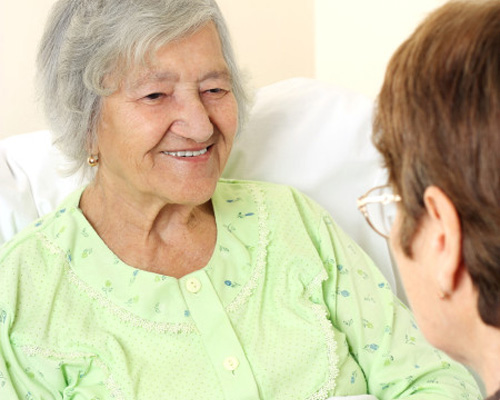Bedsores are the areas of ischemia and necrosis of tissues resulting from prolonged compression, shear or friction of the tissues between the human skeleton and the surface of bed.
It is well known that human body tissues function obtaining the necessary nutrients from blood. Blood vessels, which penetrate all human tissues and are like soft elastic tubes, deliver blood to all the organs and tissues of the human body. The smallest ones, the capillaries, are especially important for normal metabolism in tissues. The movement of fluid through such tubes is easy to be slowed down or completely stopped by compressing them. Any sitting or bed-bound person has some of his soft tissue and blood vessels compressed, which results in a lack of blood flow to the tissues. If this condition lasts for more than 2 hours, then a nutritional disorder (ischemia), and later the death (necrosis) of soft tissues comes. Bedsores (or as they are also called – decubitus ulcers, pressure sores or pressure ulcers) are developing. Therefore it is necessary to remember that prolonged immobility is not safe!
The second reason, due to which bedsores may develop, is, for example, when the bed sheet is pulled out from the patient. At this time there is a significant displacement of the surface layers of soft tissues relative to deeply placed layers, which results in rupture of small blood vessels, and disturbance of blood supply to these tissues. Similarly, bedsores can form in weak, bed-bound patients, who, without support in the legs, start slowly slide down in a chair or in a bed from a sitting or half-sitting position, which is barely noticeable to the eye but very sensible to soft tissues.
Bedsores risk factors:
– bad nutrition and lack of drinking;
– overweight and exhaustion;
– smoking;
– cardiovascular diseases;
– diabetes;
– incontinence;
– injuries and diseases of the brain and spinal cord;
– sweating at an elevated temperature;
– dirty skin;
– crumbs and small items in the bed;
– folds, stitches, buttons on underwear;
– allergic reaction to skin-care products.
Places where bedsores appear more often
Potential areas of bedsores formation may be all the places over the bony prominences on the body, which are compressed when lying or sitting. The subcutaneous fat at these places is the least expressed, and the pressure of bony prominences is expressed more strongly. If the patient is lying on his back these places are the sacrum, heels, ischial tuberosity, elbows, shoulder blades, back of the head. When lying on sidelong – on the side of the hip (the area of major trochanter), on the sides of the ankles and knees. If the patient is lying on his stomach – the pubic area and cheekbones.
Bedsores stages
In the development of bedsores several stages can be distinctly specified. The longer lasts the pressure on the skin area, the harder is the tissue damage.
Stage I. Clearly limited red area of intact skin, the redness does not disappear after relieving the pressure. Patients with darker skin, which does not allow to determine the change in its coloring, may perform the diagnostic of the skin area under pressure by the increase in temperature, the emergence of induration or edema. Redness disappears in a few hours or days after the cease of pressure depending on the degree of circulatory disorders.
Stage II. Partial damage of epidermis up to dermis. It is characterized by surface ulcer, which can manifest itself clinically in the form of scratch, blister, or shallow crater.
Stage III. Damage of all skin layers (epidermis, dermis and subcutaneous tissue), which can reach the fascia lying under the skin, without affecting it. Clinically such bedsore manifests itself as a deep open ulcer exposing underlying tissues or without it.
Stage IV. Sores throughout the entire thickness of skin with extensive tissue necrosis and damage to muscles, tendons and bones. Often there is tissue damage and the formation of infected pockets.
Prevention principles
Treatment and prevention of bedsores are inextricably associated with a whole set of measures aimed at the care for sick person. Material costs for the prevention of bedsores are always lower than their treatment.
The preventive measures are required for patients who use a wheelchair, are confined to bed, patients suffering from partial immobility (of separate body parts), urinary and/or fecal incontinence, exhausted patients, patients with obesity, suffering from diabetes, or suffering from effects of a stroke.
Major prevention principles:
• reduction of pressure, friction or shear;
• periodical change of position;
• special mattresses, aids and appliances helping to reduce compression areas;
• good nutrition and personal hygiene;
• reduction of skin irritants;
• skin care – keep the skin clean;
• reduction of skin moisture;
• regular and proper urination and defecation.
But even with the best care, only bedsores of the first and second stage may be treated without any operative intervention. Bedsores of stages three and four usually need a surgery followed up by a prolonged recovery period with possible complications. That’s why a regular inspection of the body of immobile patients with the early detection of bedsores is so important.




